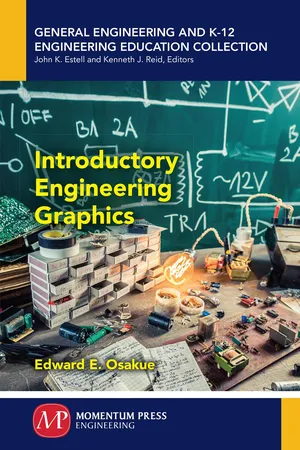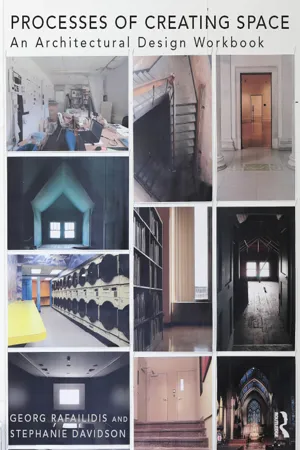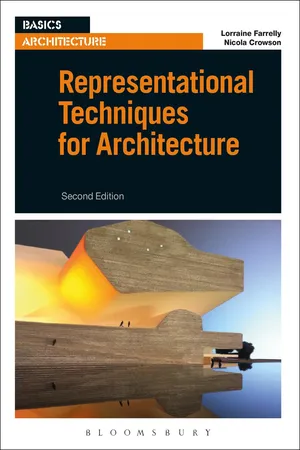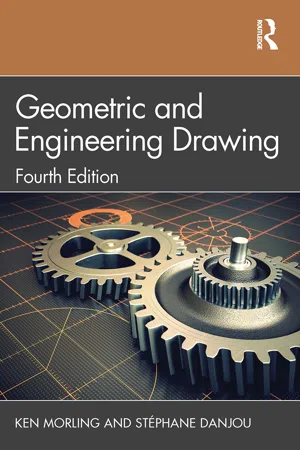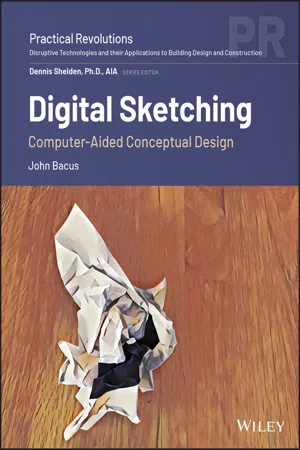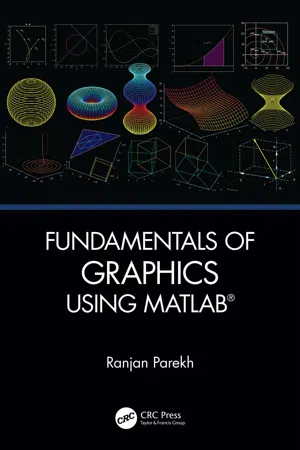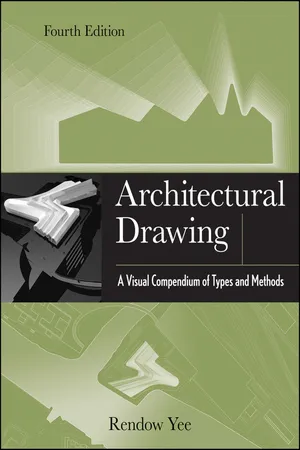Technology & Engineering
Orthographic Projection
Orthographic projection is a method used in technical drawing to represent a three-dimensional object in two dimensions. It involves creating multiple 2D views of an object from different angles, such as top, front, and side views, to accurately depict its shape and dimensions. This technique is commonly used in engineering and architecture for creating detailed and precise drawings of objects and structures.
Written by Perlego with AI-assistance
Related key terms
9 Key excerpts on "Orthographic Projection"
- eBook - ePub
- Gary Thorne(Author)
- 2015(Publication Date)
- Crowood(Publisher)
9 ORTHOGRAPHIC PROJECTIONIn Orthographic Projection the object drawn is presented through a series of views. Each view will represent the individual surface planes, in their true height, depth and width. The spectator’s view is at a plane parallel to the object’s elevation (such as front view, side view, and top view). Technical information from the object (edges and contour) is projected onto the picture plane through perpendicular projections. The information, once transferred, is joined-up by line to present a view. The view is an elevation often scaled proportionally yet with true dimension applied, in a technical manner. All views deliver the necessary information for construction to process the build, facilitating a three-dimensional impression in the mind.Multi-views of an object in Orthographic Projection depict surface as viewed only in two dimensions; it is not represented in three dimensions as may be found in isometric or axonometric projection or perspective drawing. The views are in themselves ‘elevations’, meaning they give true representation to height, width, and depth measurements. Therefore to successfully represent a three-dimensional object two dimensionally, there is a need to present at least two separate views to describe it. When the object cannot be successfully represented by two views alone, the drawing in layout will deliver ‘three regular views’ or ‘multi-views’ of an object, or six views of the object are depicted for it to be fully understood. Technical drawing for performance is not as clearly defined with sets of rules, as one scenic element may require only two views, while another may need presenting through multiple views, as it may present a unique problem. The set designer presents unique production demands: with each design arrives a new set of priorities, new ways of looking at things. Clarity of intent is the overall aim when draughting Orthographic Projection, yet when advice or guidance is needed, support is not far away through consultation with technical or production management, the Head of Construction or with engineers whom one might be fortunate to be working with. - eBook - ePub
- Edward E. Osakue(Author)
- 2018(Publication Date)
- Momentum Press(Publisher)
CHAPTER 2 STANDARD ORTHOGRAPHIC DRAWING VIEWS2.1 INTRODUCTIONOrthographic views are 2D images of a 3D object obtained by viewing it from different orthogonal directions. Six principal views are possible and are named top, bottom, front, rear, left, and right views. However, three of the six views are regarded as standard views. The U.S. standard views are the top, front, and right views and are based on third angle Orthographic Projection. The European standard views are the front, top, and left views and are based on first angle Orthographic Projection. 2D orthographic views can be generated directly from solid models, which is much faster than constructing the views. Multiview drawings consist of two or more views with appropriate annotations arranged in some preferred pattern. They include standard orthographic views, auxiliary views, and section views. Auxiliary and section views are used to supplement standard views in order to clarify views, improve visualization of designs, and facilitate dimensioning of drawings. Detail component drawings are most often 2D engineering drawings of parts with necessary information for construction, manufacturing, or inspection. 2D assembly drawings are extensively used in the building of equipment and structures. Multiview drawing guidelines are prescribed by ANSI/ ASME Y14.3M in the U.S standards.2.2 PROJECTION TYPESProjection is the graphic technique of connecting points on a 3D object by straight lines (linear projection) to points on an image planes so as to create its image(s). Natural objects are in 3D solid form bounded by vertices, edges, and faces. Vertices are points on objects, edges are lines on objects, and faces are flat and curved surfaces on objects. These and other geometric entities that make the solid are called features. As points are the most basic graphic features, images of objects may be created from points on it. In a projection, points on a 3D object are used to create its image(s) on a projection or picture or image plane. The image plane is an imaginary transparent flat surface that coincides with the drawing surface, which may be a paper or computer screen. A projection relates an observer and an object to an image plane through the lines of sight or projection. In an Orthographic Projection, the views of the object are obtained by viewing it from different orthogonal directions. This technique allows a 3D object to be accurately represented on a 2D plane with multiple views. There are two types of projections: parallel and perspective projections. Figure 2.1 - eBook - ePub
- Edward E. Osakue(Author)
- 2018(Publication Date)
- Momentum Press(Publisher)
CHAPTER 5Standard Orthographic Drawing Views 5.1 IntroductionOrthographic views are 2D images of a 3D object obtained by viewing it from different orthogonal directions. Six principal views are possible and are named top, bottom, front, rear, left, and right views. However, three of the six views are regarded as standard views. The U.S. standard views are the top, front, and right views and are based on third angle Orthographic Projection. The European standard views are the front, top, and left views and are based on first angle Orthographic Projection. 2D orthographic views can be generated directly from solid models, which is much faster than constructing the views. Multiview drawings consist of two or more views with appropriate annotations arranged in some preferred pattern. They include standard orthographic views, auxiliary views, and section views. Auxiliary and section views are used to supplement standard views in order to clarify views, improve visualization of designs, and facilitate dimensioning of drawings. Detail component drawings are most often 2D engineering drawings of parts with necessary information for construction, manufacturing, or inspection. 2D assembly drawings are extensively used in the building of equipment and structures. Multiview drawing guidelines are prescribed by ANSI/ASME Y14.3M in the U.S standards.5.2 Projection TypesProjection is the graphic technique of connecting points on a 3D object by straight lines (linear projection) to points on an image planes so as to create its image(s). Natural objects are in 3D solid form bounded by vertices, edges, and faces. Vertices are points on objects, edges are lines on objects, and faces are flat and curved surfaces on objects. These and other geometric entities that make the solid are called features. As points are the most basic graphic features, images of objects may be created from points on it. In a projection, points on a 3D object are used to create its image(s) on a projection or picture or image plane. The image plane is an imaginary transparent flat surface that coincides with the drawing surface, which may be a paper or computer screen. A projection relates an observer and an object to an image plane through the lines of sight or projection. In an Orthographic Projection, the views of the object are obtained by viewing it from different orthogonal directions. This technique allows a 3D object to be accurately represented on a 2D plane with multiple views. There are two types of projections: parallel and perspective projections. Figure 5.1 - eBook - ePub
Processes of Creating Space
An Architectural Design Workbook
- Georg Rafailidis, Stephanie Davidson(Authors)
- 2016(Publication Date)
- Routledge(Publisher)
With Orthographic Projection, the picture plane is oriented perpendicular to the lines of sight. (4.3.2) Orthographic Projection can produce two types of drawings: pictorial drawings and multiview drawings. A pictorial drawing shows all three dimensions of an object in a single view. We can create a pictorial drawing with the Orthographic Projection method, if no dominant surface of the object is parallel with the picture plane. An axonometric projection is an example of pictorial drawing. In an axonometric drawing, lines of sight are parallel with one another and perpendicular to the picture plane, but the picture plane is not parallel with a dominant plane of the object. (4.3.3) Unlike a pictorial drawing, a multiview drawing appears flat because it is focused on a specific surface. To generate a single multiview drawing, the picture plane is oriented parallel to a specific surface of the depicted object. A surface that is parallel to the picture plane is represented in its true size and form. (4.3.4) While two dimensions are represented accurately in this method, the third dimension is hidden. Therefore, to describe all three dimensions of an object comprehensively with multiview Orthographic Projection, we need to generate several views, each view generated by reorienting the picture plane parallel with a specific surface of the depicted object - eBook - ePub
- Lorraine Farrelly, Nicola Crowson(Authors)
- 2015(Publication Date)
- Bloomsbury Publishing(Publisher)
3 Orthographic ProjectionDisplaying a proposed piece of architecture as a series of drawings presents an interesting challenge. The information in the drawings needs to be both accurate and interconnected to tell the story of the building and communicate the proposed scheme clearly using a system that is universally recognized and understood. These drawings are 2D images that need to be read and interpreted as a 3D building or space.Orthographic Projection refers to a system of interrelated 2D views of a building. This system includes the views from above or a horizontal cross-section of a building (the plan), the views from the side of a building (the elevation), and the views of vertical “cuts” or cross-sections of the building (the section). These drawings can be collectively referred to as a “full set” and will include all floor plans, the roof plan, all elevations, and a series of vertical “cuts” that explain the internal and external relationships of the building.The purpose of these drawings is to technically describe how to physically realize a conceptual idea. The plan, section, and elevation all relate to one another and depending on the conceptual idea of these drawings can be a starting point. Often, the plan is drawn first and section and elevations are then drawn alongside it. Using CAD software, the plans will be carefully drawn on different “layers” ensuring that the floor plan of the ground and subsequent floors align.Reading plan, section and elevation drawings correctly is a skill. This chapter describes how the convention of plan, section, and elevation are used to describe architectural ideas and design buildings and structures.3.1 Project: Thomas HouseLocation: Pencclawd, WalesArchitects: Hyde & HydeThis section drawing shows the relationship between the site and the proposed Thomas House. The drawing explains the key aspects of the project, a building elevated over an uneven terrain that has been utilized to provide a ramped driveway. The section is represented in black with photorealistic materials applied in elevation. - eBook - ePub
- Ken Morling, Stéphane Danjou(Authors)
- 2022(Publication Date)
- Routledge(Publisher)
Figure 4.13 shows a small stepped pulley drawn twice in oblique projection. It is obvious that the drawing on the left is easier to draw than the one on the right.4.4 AXONOMETRIC PROJECTION (ISOMETRIC AND DIMETRIC)
Another method of parallel projection is Orthographic Projection. In contrast to oblique projection where the projectors are at any angle other than 0° or 90°, in Orthographic Projection (ortho = right) all projectors are perpendicular to the plane of projection (Figure 4.14 ). There are two methods of Orthographic Projection. One is called multi-view projection and is used for engineering drawings. The other one, axonometric projection, is used to create pictorial drawings.Engineering drawings are usually drawn in multi-view projection, whose principles are explained in the subsequent section. For the presentation of detailed drawings, this system has been found to be far superior to all others. The system has, however, the disadvantage of being very difficult to understand by people not trained in its usage. It is always essential that an engineer be able to communicate his or her ideas to anybody, particularly people who are not engineers, and it is therefore an advantage to be able to draw using a system of projection that is more easily understood such as an axonometric projection.Figure 4.13A drawing of a stepped pulley.An axonometric projection is a projection method where a pictorial view is created by rotating the object on one of its axes, relative to the projection plane. In this way all three dimensions can be shown. However, not all of them are shown in true size (Figure 4.15 ).Axonometric projections can be further classified by the angles between the axonometric axes. When all angles are equal, the projection is classified as isometric projection. When two of the three angles are equal, the projection is referred to as dimetric. When none of the three angles differ in size, the projection is called trimetric - eBook - ePub
Digital Sketching
Computer-Aided Conceptual Design
- John Bacus(Author)
- 2020(Publication Date)
- Wiley(Publisher)
Cutting planes work from an abstract notion that the world is made of some material that can be cut through cleanly to expose its internal properties. Some materials are rendered transparently, like air or glass. Others are rendered with opacity, like structural materials of wood, steel, or concrete. Some sectional views consider only a difference between solid and void, filling the inside of cut solids with a single fill color. When greater detail about constructability matters, sectional views may show solid material types with representational hatch patterns.Cutting planes are a powerful design tool, valuable from your earliest sketch to most precise construction details. They give you a supernatural power to understand both the interior and exterior of your design at the same time. Penetrations from inside to outside, as, for example, doors or windows, give your building's users a glimpse at this special point of view, but without the privileged oversight that you have with a full sectional view.Orthographic Projection
Orthographic Projections of space are idealized abstractions that preserve true dimensions, in scale, while minimizing perspectival distortion. This is accomplished by passing a cutting plane through the space of the project parallel to and projecting plane, projecting project details beyond the cut directly onto the picture plane. In an Orthographic Projection, all dimensions parallel to the cutting plane are drawn at true scale (Figure 3.13 ).Encompassing plan, section, and elevation views, Orthographic Projections are a natural abstraction of space that predates the invention of perspective by thousands of years. Orthographic Projections can be found in drawings throughout ancient Egypt.4 Possibly the earliest identifiable architectural drawings, carved in clay tablets in ancient Mesopotamia, are orthographic in nature (Figure 3.14 ).If you are sketching by hand today, you are likely sketching orthographically. With a roll of trace and an architect's scale by your side, sketches of plans and elevations are among the fastest ways to churn through the essential spatial components of any architectural project. In plan, a single fat line drawn with a black marker can quickly progress a simple network diagram to a representation of a credible structure with walls and floors. Sketching in Orthographic Projection is easy, fast, and natural. - eBook - ePub
- Ranjan Parekh(Author)
- 2019(Publication Date)
- CRC Press(Publisher)
Figure 9.1 ).Usually for 3D projection, parallel Orthographic Projection can also be sub-divided into two types: multi-view and axonometric. In multi-view projection, the projection occurs on the primary planes i.e. XY -, YZ -, or XZ -planes. Such views are called top, side, and front views, and display only one face of the object. These are used in engineering and architectural drawings as length and angles can be accurately measured. In axonometric projection, the projection occurs on an arbitrary plane that does not coincide with any of the primary planes. In this case, more than one face of the object can be viewed. The ratios of the actual lengths of the object along the three axes to their projected lengths are called foreshortening factors.FIGURE 9.1 Projection types.9.2 2D Projection
For studying 2D projection, we use vector equations in homogeneous coordinates, as explained in Section 6.9 . The main results are summarized here for the benefit of the reader.Cartesian equation of a line is: ax + by + c = 0 and is expressed in vector form as ℓ = (a , b , c ).P (X , Y , W ) are homogeneous coordinates of point (x , y ) i.e. x = X /W , y = Y /W .For line ℓ = (a , b , c ) passing through P (X , Y , W ) we must have: ℓ · P = 0.For line ℓ through two given points P 1 (X 1 , Y 1 , W 1 ) and P 2 (X 2 , Y 2 , W 2 ) we have: ℓ = P 1 × P 2 .The intersection point P of two lines ℓ 1 and ℓ 2 is given by: P = ℓ 1 × ℓ 2Let P be a point on an object, which is projected on the viewline L along direction VP at Q , where V is the PRP. Let the projection line through P and V be K . Since, line K passes through two points P and V we have (Figure 9.2a - eBook - ePub
Architectural Drawing
A Visual Compendium of Types and Methods
- Rendow Yee(Author)
- 2012(Publication Date)
- Wiley(Publisher)
Chapter 5
Orthographic and Paraline Drawing
BASICS BASICS APPLIEDDeveloping the ability to visualize and graphically express forms and spaces in three dimensions is important for environmental design students. With the exception of the case studies in Chapter 3, which might be inspired by different kinds of narratives and conceived with the help of advanced digital software, the design-drawing process usually begins with two-dimensional expressions in the form of orthographic sketches and drawings. These multiview drawings are the plan, elevation, and section vocabulary that an architect/designer uses. Multiviews help us accurately examine geometric configurations, spatial relationships, and the scale and proportion of a design. Multiviews by themselves cannot, however, reveal the three-dimensional pictorial configuration of an object or building, according to Orthographic Projection theory. For pictorial depth expression, the closely related three-dimensional, single-view drawings termed “paralines” and “perspectives” are needed. Paralines, as the name implies, are characterized by parallel lines, whereas perspectives are characterized by converging lines. Paraline drawings depict volumetric forms by combining the parameters of length, width, and depth, while simultaneously uniting plan, elevation, and section into one illustration.
Index pages curate the most relevant extracts from our library of academic textbooks. They’ve been created using an in-house natural language model (NLM), each adding context and meaning to key research topics.

